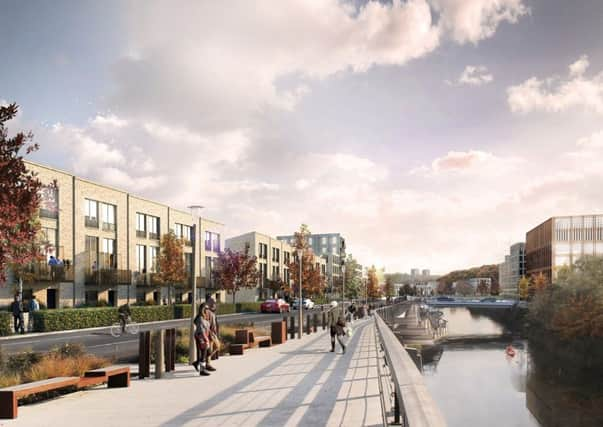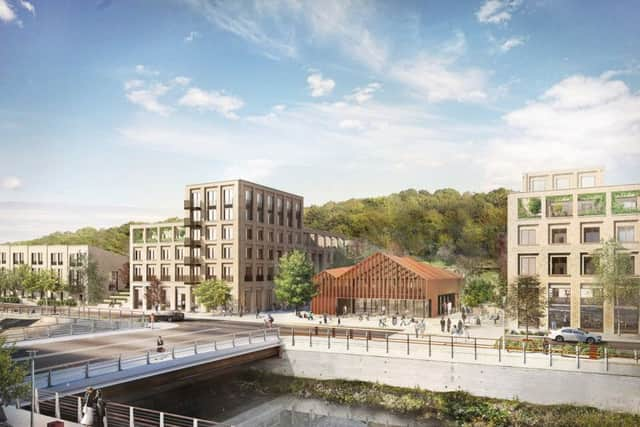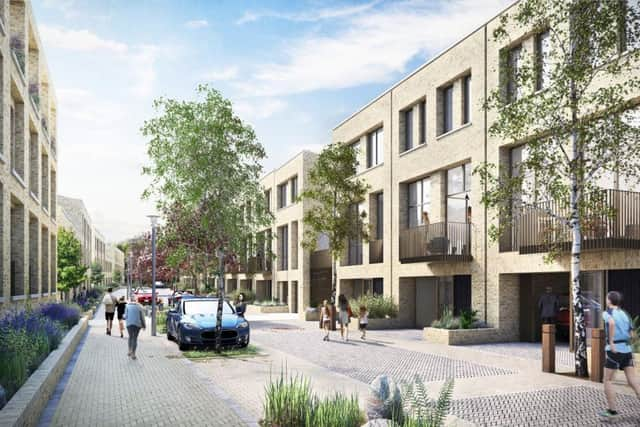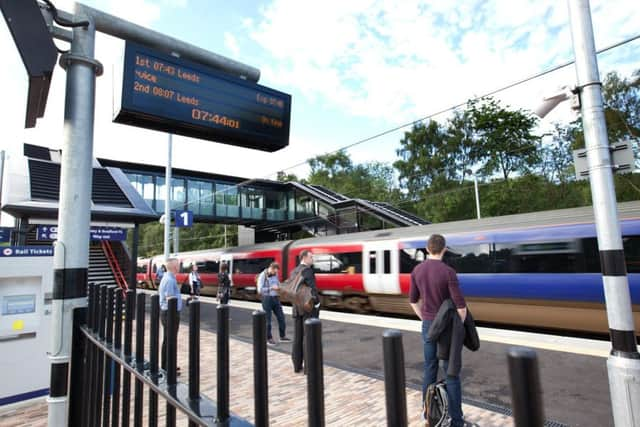Designs for Kirkstall Forge village homes revealed


Sir Titus Salt would be delighted to know that his Victorian model village in Saltaire is not just a desirable postcode and tourist attraction.
The proof of its continued relevance is at Kirkstall Forge, a 57-acre former industrial site between Leeds city centre and fashionable Horsforth, where Feilden Clegg Bradley architects have been heavily influenced by Salt’s ethos of building better for the sake of well-being.
Advertisement
Hide AdAdvertisement
Hide AdHe wanted to provide his mill workers with an alternative to slums and gave them attractive, good quality homes, a new factory and amenities. The reward was healthier, happier employees who were more productive.


Feilden Clegg Bradley and developers CEG are emulating that ideal and while their main aim is to build and sell residential and commercial property, they have higher aspirations of creating a contemporary idyll. They have been greatly helped by the natural environment and the prime location. Just off the main A65, the old forge is in a hidden valley with the River Aire running through it.
CEG has just released the first images of what the new homes there could look like after submitting detailed designs for council approval. It already has consent to build and work on the first phase of 112 properties is due to start at the beginning of next year. They will go on sale in September 2018 and mark an important milestone in a ten-year scheme to build 1,050 new homes, 300,000 sq ft of office space and 100,000 sq ft of shops, cafes, a primary school and park.
The houses and apartments are strikingly contemporary, which is what CEG MD Jon Kenny wanted. He chose Sterling prize winners FCB after seeing its Dwelling Accordia project in Cambridge.
Advertisement
Hide AdAdvertisement
Hide Ad“We didn’t want to fall into the trap of repeating a path well trodden. We wanted to do something different,” he says.


More than £40million has already been invested in site clearance, the construction of the first office building and a new bridge over the river and decking on its banks.
The three to four-bedroom brick-built houses in the first phase of building are on three terraced streets. They feature open-plan living spaces, 12-foot high ceilings and an abundance of glazing, plus gardens, terraces and parking.
Architect Andrew MacIntosh says: “It is an arrangement that borrows both from industrial era model villages, such as Saltaire and also from contemporary Scandinavian ideas about co-housing.”
Advertisement
Hide AdAdvertisement
Hide AdAt the centre of the site, a public square will be flanked by two taller buildings, which will include houses and apartments, a communal garden, shops, cafes, a concierge service.


Jon Kenny admits that the site looked like “Mission Impossible” but thanks to his determination and strong political support at local level it promises to be one of Leeds biggest property success stories.
“It’s been very complex and up there with some of the biggest regeneration projects in the country,” says Kenny. Now based in London, he grew up in Yorkshire and remembers “the mile-long big red brick wall” surrounding the working forge from when he was a child.
“When I first saw behind that wall I realised there was a beautiful river valley surrounded by woodland. It was exceptional, unlike any other industrial site I had seen. It was an opportunity to create a modern village and chances like that don’t come along very often.”
Advertisement
Hide AdAdvertisement
Hide AdPlans for the site, which CEG bought in 2003, were stalled by the recession but patience was rewarded by the piece de resistance, the new Kirkstall Forge railway station and a six-minute train journey into Leeds central.


It opened two years ago and was a joint effort between CEG, the council, Metro and the local MP, who persuaded central government to fund it. The station will be a major selling point when the first homes hit the market next year.
It has certainly helping to fill the first office block, which opens in October. The office workers will be Kirkstall Forge’s first “residents” and if Jon Kenny’s vision is realised, by 2027 there should be 10,000 people living and working alongside them.
This is the biggest scheme he has ever been involved in and he sees it as a legacy site. He hopes his children will be able to say proudly, “My dad did that.”
Advertisement
Hide AdAdvertisement
Hide Ad*For more details on Kirkstall Forge, visit www.kirkstallforge.com
*Kirkstall Forge is the largest brownfield site set for redevelopment in Leeds and it is the most ambitious scheme in the city’s development pipeline. Jonathan Morgan, of Morgans property agency, says: “The housing design approach, which is unashamedly modernist, will set new standards of quality in the Northern housing market and Kirkstall Forge will, we believe, become one of the most desirable places to live in the region.
“This level of quality, attention to detail and place-making is highly unusual in the North and it is clear that CEG have every intention of creating something very special. This is very exciting stuff.”